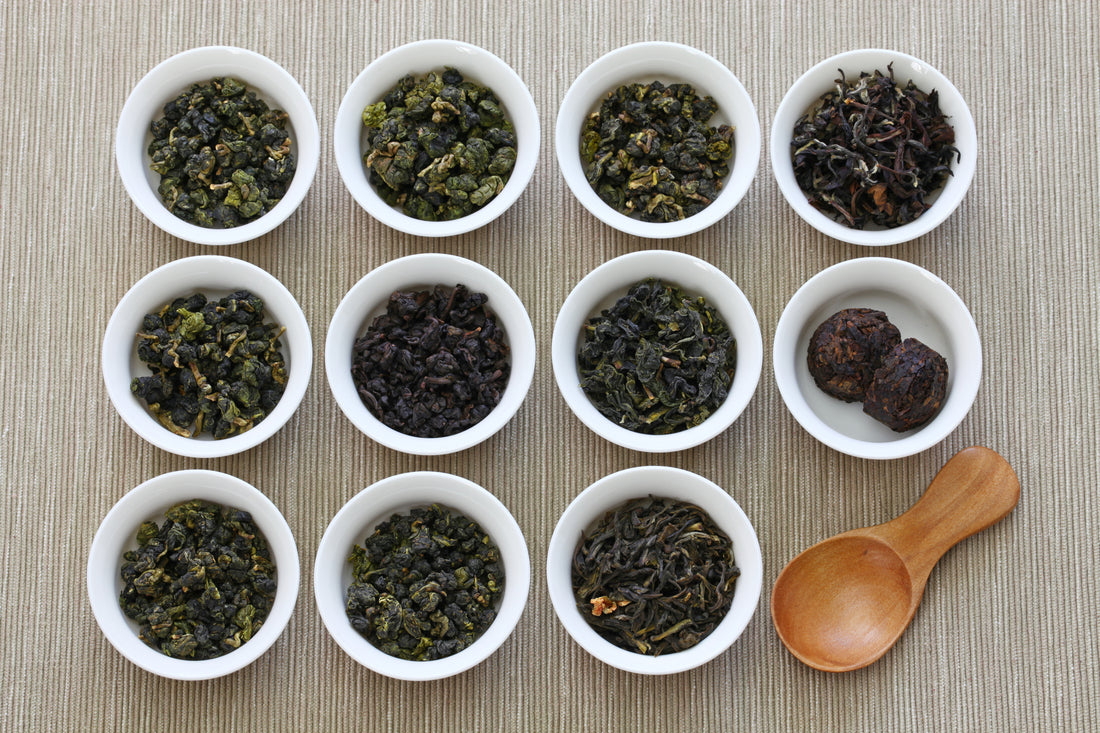China has been the birthplace and heartland of tea culture for thousands of years. Its rich, varied landscape has given rise to diverse types of teas, each with unique characteristics. This article will delve into six essential categories of Chinese teas: green tea, red tea, white tea, yellow tea, oolong, and pu-erh, shedding light on their processing, flavors, and health benefits.
Green Tea (绿茶 Lǜ Chá)
Green tea is the most widely consumed tea in China. Its green leaves are pan-fried or steamed to prevent oxidation, preserving their green color and fresh taste.

Famous Varieties
- Longjing (Dragon Well): Hailing from Hangzhou, this tea is known for its nutty and sweet taste.
- Biluochun: Renowned for its delicate, fruity flavor.
Health Benefits
Green tea is rich in antioxidants, particularly catechins, which may aid in weight loss and protect against heart disease.
Red Tea (红茶 Hóng Chá) - Often referred to as Black Tea in the West
Red tea is fully oxidized, giving it a deep color and robust flavor.

Famous Varieties
- Qimen (Keemun): A popular black tea with a wine-like, fruity flavor.
- Dian Hong: Originating from Yunnan, known for its malty taste.
Health Benefits
Red tea is high in flavonoids, which may support heart health and reduce inflammation.
White Tea (白茶 Bái Chá)
White tea is the least processed of all tea types. It's allowed to wither naturally, resulting in a light, delicate flavor.
Famous Varieties
- Bai Mudan (White Peony): It features a floral, peony-like taste.
- Silver Needle: Characterized by young buds and a fresh, subtle sweetness.
Health Benefits
White tea is rich in polyphenols and antioxidants, which may promote healthy skin and support the immune system.
Yellow Tea (黄茶 Huáng Chá)
Yellow tea is a rare and expensive variety, known for its unique production process, which includes a “smothering” phase.
Famous Varieties
- Junshan Yinzhen: A delicate tea from Hunan province, famous for its smooth, gentle flavor.
Health Benefits
Yellow tea shares many of the health benefits of green tea but is believed to be even gentler on the stomach.
Oolong Tea (乌龙茶 Wūlóng Chá)
Oolong tea is semi-oxidized, representing a balance between green and red teas. It is known for its complex flavors and aromas.

Famous Varieties
- Tieguanyin: A fragrant and rich tea, named after the Goddess of Mercy.
- Da Hong Pao: A robust, mineral-rich tea from the Wuyi Mountains.
Health Benefits
Oolong tea may aid in weight loss and help to lower cholesterol.
Pu-erh Tea (普洱茶 Pǔ'ěr Chá)
Pu-erh tea, from Yunnan province, is aged and fermented, resulting in a unique earthy flavor.

Famous Varieties
- Sheng Pu-erh: Raw Pu-erh that ages naturally.
- Shu Pu-erh: Cooked Pu-erh, artificially aged for a faster maturation.
Health Benefits
Pu-erh tea may support digestion and aid in the detoxification process.
Conclusion
The landscape of Chinese teas is as vast and varied as the country itself. These six categories represent just a glimpse of the rich tradition and art of Chinese tea culture. Whether you prefer the freshness of green tea, the complexity of oolong, or the boldness of pu-erh, China's tea heritage offers something for every palate.


